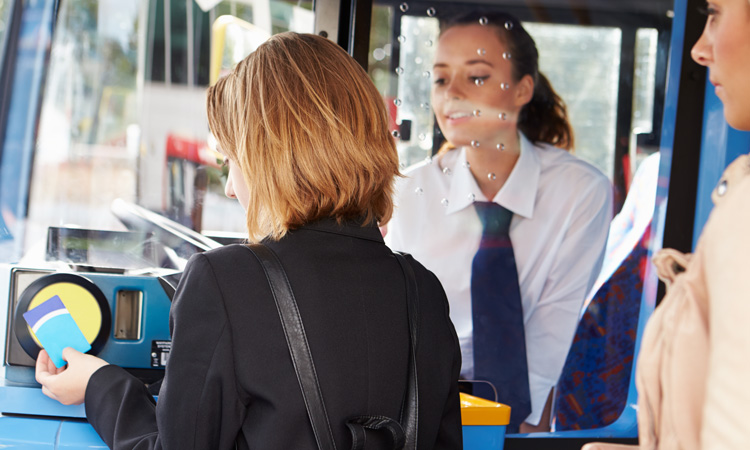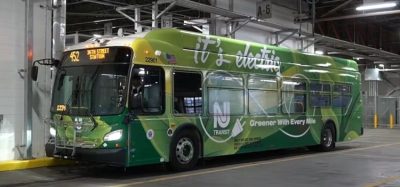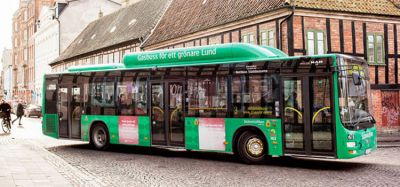The future of work for women in public transport
- Like
- Digg
- Del
- Tumblr
- VKontakte
- Buffer
- Love This
- Odnoklassniki
- Meneame
- Blogger
- Amazon
- Yahoo Mail
- Gmail
- AOL
- Newsvine
- HackerNews
- Evernote
- MySpace
- Mail.ru
- Viadeo
- Line
- Comments
- Yummly
- SMS
- Viber
- Telegram
- Subscribe
- Skype
- Facebook Messenger
- Kakao
- LiveJournal
- Yammer
- Edgar
- Fintel
- Mix
- Instapaper
- Copy Link
Posted: 9 June 2020 | Claire Clarke - International Transport Workers’ Federation (ITF) | No comments yet
Claire Clarke, Deputy Women Transport Workers and Gender Equality Officer from the International Transport Workers’ Federation (ITF), explains how women continue to face gender segregation in the public transport sector and what the sector can do to rectify the situation.


The development of new transport systems and technological change therefore has the potential to bring benefits for women public transport workers, for example: in opening up new opportunities for work in the formal sector and moving away from precarious informal work; in improving vehicle operation and safety to make driving work more attractive to women; and in offering more flexible work hours and patterns through platform work.
On the other hand, many of the jobs that women typically undertake have been affected by the automation of ticket sales – in some cases resulting in job loss – although where union agreements exist, relocation has occurred. Further automation of ticket sales and fare collection is likely, though progress in further roll out has been limited by technological, business and political difficulties, according to the evidence from this report. A further important point to emerge from the interviews with women workers in ticketing and customer service roles is the strong preference from passengers for human interaction over machine services, which are often slower or function poorly.
One of the most important challenges facing the workforce globally is the development of new technologies that have the potential to transform the world of work – eliminating some tasks, massively increasing surveillance and control, and enabling new ways of organising the transportation of goods and people.
There are potential benefits and risks for women’s employment in transport from the introduction of new technologies and further innovation. For example, women are often at the sharp end of automation as their jobs in ticket sales and customer service functions may be particularly at risk, while technological changes in vehicle operations may improve the job of driving for women.
For women workers, technological development is happening in the context of unequal pay, sexual discrimination, gender-based occupational segregation and exposure to violence, on top of economic stagnation and a dominant economic model that incentivises precarious work and the lack of formal work opportunities.
Implications for women’s employment
In April 2019, the International Transport Workers’ Federation (ITF) launched a major report, The impact of the future of work for women in public transport. Written by Professor Tessa Wright at the Centre for Research in Equality and Diversity at Queen Mary University of London, it focused on five cities that are introducing a new form of public transport system or are extending an existing transport mode, which have significant implications for women’s employment.


Many of the jobs that women typically undertake have been affected by the automation of ticket sales
The evidence from the research undertaken in the five cities has confirmed that women continue to face gender segregation in the public transport sector, being concentrated into lower paying and, in some cases, more precarious or informal positions. However, the report has also highlighted patterns of change, with growing numbers of women entering the public transport workforce in some places, such as in Mexico City and across South Africa. There are also indications that women are gaining greater opportunities to move into typically male areas, such as driving in new forms of transport systems (e.g. BRT and expanding metro systems), as well as being attracted by the flexibility that platform taxi services can offer.
The development of new transport systems and technological change therefore has the potential to bring benefits for women public transport workers, for example: in opening up new opportunities for work in the formal sector and moving away from precarious informal work; in improving vehicle operation and safety to make driving work more attractive to women; and in offering more flexible work hours and patterns through platform work.
On the other hand, many of the jobs that women typically undertake have been affected by the automation of ticket sales – in some cases resulting in job loss – although where union agreements exist, relocation has occurred. Further automation of ticket sales and fare collection is likely, though progress in further roll out has been limited by technological, business and political difficulties, according to the evidence from this report. A further important point to emerge from the interviews with women workers in ticketing and customer service roles is the strong preference from passengers for human interaction over machine services, which are often slower or function poorly.
Opportunities for training
Opportunities for training were highlighted as essential to ensure that women gain access to new jobs when transport infrastructure is introduced or upgraded. However, the research found that training was often lacking, for example, in enabling women to gain driving licences or operate new technological systems.
There were, however, examples of national apprenticeships or sponsored learnership schemes being used to train women to get driving licences so they could apply for new jobs, such as on the Cape Town BRT. This measure aimed to address the male dominated nature of driving in the BRT, which replicated pre-existing patterns of gender segregation among taxi drivers. When BRT was introduced, priority in recruitment was given to taxi drivers who feared loss of work as a result of the new system. This was part of a strategy to ensure black economic empowerment, in compliance with South African legislation.
Public-private partnerships
While there may be potential benefits for women workers in BRT systems, the model under which it is introduced, often as a requirement of World Bank financing, insists on public-private partnerships, which introduces competition between vehicle operating companies and separation of local authority control and regulation from operation of services. The research from Bogotá showed that this resulted in little monitoring of worker terms and conditions in each company by the organisation running the system, Transmilenio, with attention only paid to passenger service issues. However, Transmilenio negotiates the contracts with the operators, so could insist on terms that include decent labour practice requirements, but it does not do so.
The use of a model which requires the outsourcing of operational provision to private companies can also negatively affect women’s employment in several ways. In cities such as Mexico City and Bogotá, women are more likely to be employed in public sector positions in public transport, therefore outsourcing could put such jobs at risk.
The development of new transport systems and technological change has the potential to bring benefits for women public transport workers
Unions in Mexico City have found that when new, privatised systems are introduced, such as electric taxis, this is accompanied by inferior, non-unionised terms and conditions, thus they are fearful about plans for new electric buses. In Bangkok, women believed that jobs in the state-run rail operators offered better conditions. Moreover, in Cape Town, the introduction of BRT involved a worsening of driver pay and conditions at the BRT operating companies in comparison to GABS – the private company that had run bus services in Cape Town for many years. Women are employed in greater numbers (although still small numbers overall) as drivers in the new operating companies than in GABS.
Violence and sexual harassment
The report revealed that women public transport workers continue to face violence and sexual harassment from passengers and male colleagues in all cities, consistent with other worldwide research evidence. This deters women from undertaking certain jobs, for example driving jobs that require late night working or travel to unsafe parts of cities. However, it was also seen that in the jobs that women regularly undertake, such as customer service and ticket sales positions, passenger violence and harassment is a regular occurrence.
Interviewees felt that more needed to be done by employers to provide safe work environments, both in stations and for drivers. This can include the provision of safe transport to and from work for those on late and early shifts (which in some instances is provided for drivers but not ticket sales staff who also do early and late shifts), or design and technological solutions for bus and train cabs, including emergency alert systems, for example.


Laudrive in Mexico City was presented as an example of a women-only platform taxi company, where both drivers and customers are women, set up to provide a safe service for women. The company remains small and therefore finds it difficult to get access to further investment funds, and also has a limited market share due to its decision to serve only women riders, who also have less access to economic resources than men. However, it represents a model that overcomes some of the safety issues for platform taxi drivers, as well as having better employment conditions than many of the ride-hailing platforms, and is one that could be adopted to provide an alternative form of platform driving employment for women in other cities. Given the widespread evidence of sexual harassment of both passengers and drivers globally, a women-only platform taxi service is likely to have significant appeal.
The report has highlighted the important role of women in the public transport workforce both currently and in the future
The issue of working hours is closely connected to safety as noted above, but also shapes the ability of women with caring responsibilities to participate in public transport work. While some public transport work offers flexibility, the research showed that split shifts could mean excessive work and travel hours, making such work impossible for many women workers.
The evidence from the cities in this research supports claims that platform taxi driving work can offer access to flexible employment opportunities for women, enabling them to balance work with other commitments such as family responsibilities or studying. However, these benefits may be more available to some women than others, for example, those who are not relying on this work as their sole household income, or those who have access to their own vehicle. For women who have to pay others for a vehicle, or who need to work very long hours to earn sufficient income – especially in cities with high competition from multiple platform companies and therefore downward pressure on earnings – the potential for exploitation is great.
The report highlights the importance of trade unions as stakeholders in consultations, and the need for governments, employers and trade unions to ensure that gender equality continues to progress, including:
- New public transport infrastructure and extensions of existing systems should from early stages of discussion include gender implications, provide gender impact assessments and take corresponding action
- New technological developments in public transport, including platform work, should from very early stages of discussion include gender implications, provide gender impact assessments and take corresponding action
- Contracts with operating companies should address decent work and labour rights, such as minimum wages, hours, facilities and include gender equality measures, such as sexual harassment policies, and promotion and training opportunities
- Public transport infrastructure should include adequate facilities for workers and passengers, such as toilets and provision of clean drinking water
- Relocation agreements and policy guidelines on job restructuring should also cover jobs mostly done by women, such as ticketing, and not only for drivers
- Highlight evidence that passengers prefer human interaction to machines, as well as recommendations from public transport inspection and monitoring organisations on the need for more workers in ticket collection and customer service, and safety risks to passengers of cutting staff
- Ensure promotion, training and retraining opportunities to support women of all ages into higher paid work, such as in driving, supervisory and management positions, and roles created by new technology
- Ensure working hours and shift patterns that accommodate women’s and men’s family responsibilities, and address safety risks of early and late shifts, for example by providing transport to and from work
- Develop joint campaigns to tackle passenger violence, making the connection between the provision of a safe environment for both passengers and women staff.
Overall, the report has highlighted the important role of women in the public transport workforce both currently and in the future. It has provided material to ensure that gender issues can be included in discussions about the future of public transport work in the face of technological change and further automation. It has revealed both the potential benefits and risks for women’s employment of further technological innovation, and emphasised the significant role of public transport unions in ensuring that technological change is introduced in a manner that seeks to advance gender equality, rather than entrench or even exacerbate existing patterns of gender inequality and segregation.
Biography
Claire Clarke is ITF’s Deputy Women Transport Workers and Gender Equality Officer. She joined the ITF Women’s Department in March 2017 and leads on the gender work within the ITF ‘Our Public Transport’ priority programme. Claire has worked at the ITF for 20 years and previously worked in the ITF Inland Transport Sections. In that role she delivered a number of activities for women road transport and railway workers, including playing a leading role in the first ever ITF action forum on violence against women in public transport in 2016.
Related topics
Public Transport, Staff & Skills Development, Workforce Inclusivity
Issue
Issue 2 2020
Related organisations
International Transport Workers' Federation (ITF)
Related people
Tessa Wright








